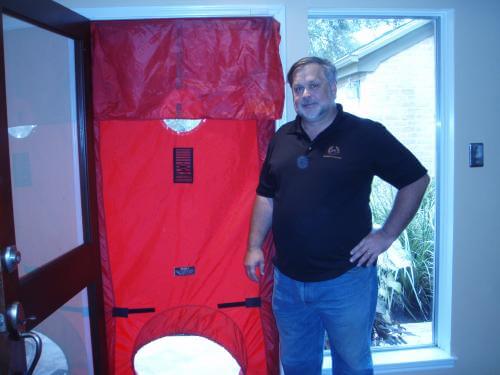Smart thermostats + energy testing = unstoppable savings combo
Smart thermostats + energy testing = unstoppable savings combo
Blog Article
How Power Screening Can Lead to Much More Sustainable Living Solutions
Power testing is an important device for advertising lasting living. It reveals ineffectiveness in energy usage within homes. Methods such as power audits and thermal imaging offer important understandings. Homeowners can determine areas needing renovation, from insulation to home appliances. Dealing with these inadequacies can cause significant power savings. Many stay not aware of the full possibility of these practices. What steps can people take to enhance their homes and contribute to an extra sustainable future?
Recognizing Energy Screening and Its Relevance
Typical Techniques of Power Screening
There are a number of typical approaches of power screening that home owners can utilize to analyze their energy performance (energy testing taylors sc). One extensively used method is the blower door examination, which determines the air leak in a home. By pressurizing the structure, it identifies drafty locations that might require sealing. Another method is thermal imaging, where infrared video cameras detect temperature variations in wall surfaces, ceilings, and home windows, highlighting insulation issues.Energy audits are likewise popular, involving an extensive analysis of a home's power use, usually conducted by a professional. These audits might consist of assessing heating and cooling down systems, devices, and general energy intake patterns. In addition, wise power meters can supply real-time data on energy use, helping homeowners understand their intake habits. With each other, these techniques offer useful insights, making it possible for home owners to make educated decisions about boosting their energy efficiency and advertising lasting living methods
Identifying Energy Inefficiencies in Your Home
Determining energy inefficiencies in a home is important for property owners aiming to lower energy intake and lower utility expenses. Common areas to assess consist of insulation, home windows, and home appliances. Poor insulation can bring about significant warm loss in winter season and undesirable warm gain in summertime, making cooling and heating systems function harder. Breezy home windows contribute in a similar way, enabling conditioned air to run away and increasing energy demand.Additionally, obsolete appliances often take in extra energy than their modern-day equivalents, further intensifying inadequacy. Homeowners need to additionally think about the lights system, as incandescent light bulbs make use of more power contrasted to LED options.Regular upkeep of heating and cooling systems is vital, as disregard can bring about reduced performance. By systematically examining these facets of a home, homeowners can determine areas needing enhancement. Attending to these inefficiencies not just enhances comfort yet also contributes to a much more sustainable lifestyle by lessening power waste.
The Duty of Power Audits in Sustainability
Energy audits play an essential role in promoting sustainability by providing property owners with an extensive evaluation of their energy usage. These analyses determine areas where energy is lost, enabling individuals to understand their intake patterns and make informed decisions for improvement. By exposing ineffectiveness in heating, cooling, insulation, and appliances, energy audits function as a crucial tool for minimizing general power demand.Furthermore, they promote the application of energy-saving actions, such as upgrading insulation or installing energy-efficient lighting, which can substantially decrease utility bills and lower carbon impacts. The understandings got from an energy audit equip home owners to focus on sustainability in their living atmospheres. As even more families involve in this process, the cumulative impact adds to wider ecological goals, fostering a society of power consciousness and responsibility. Inevitably, power audits are fundamental to advancing lasting living services, profiting both private homeowners and the setting at large.
Cutting-edge Technologies for Energy Performance
As property owners progressively seek to improve their energy efficiency, innovative innovations are emerging to sustain these undertakings. Smart home systems, geared up with sensing units and automation, permit homeowners to regulate and check energy usage in real-time. These systems can adjust heating, illumination, and air conditioning based upon tenancy, consequently reducing waste.In addition, improvements in energy-efficient devices have made considerable strides. Devices such as ENERGY STAR-rated fridges and washing devices take in much less energy while providing excellent performance. Moreover, the integration of renewable power sources, like photovoltaic panels and wind turbines, makes it possible for home owners to generate their very own power, reducing reliance on nonrenewable resources.Building materials have also advanced, with alternatives like protected concrete forms and energy-efficient windows adding to reduced power loss. Together, these innovative technologies not just improve power effectiveness yet likewise promote a more lasting living atmosphere, encouraging home owners to make impactful selections in their energy consumption techniques.
Long-Term Advantages of Sustainable Living
While lots of might check out sustainable living as a trend, its long-term benefits expand far past mere Check This Out lifestyle options. Accepting sustainable methods causes considerable reductions in carbon impacts, adding to a healthier planet. By minimizing resource consumption and focusing on renewable resource, individuals and communities can experience reduced energy costs. This financial relief can improve economic security over time, enabling reinvestment in other crucial areas.Furthermore, sustainable living promotes more powerful neighborhood connections as individuals collaborate on regional campaigns, advertising social cohesion. Health benefits likewise arise, as minimized contamination and enhanced eco-friendly spaces enhance air quality and total wellness. Additionally, future generations will acquire a much more lasting environment, making certain the schedule of all-natural resources and biodiversity. Inevitably, the long-term advantages of lasting living incorporate ecological, economic, and social measurements, offering a web link compelling case for people to take on and maintain these practices for the greater good.
Actions to Carry Out Energy-Saving Solutions
Implementing energy-saving services starts with a comprehensive evaluation of energy consumption patterns to determine locations for improvement. As soon as these patterns are recognized, people can determine energy-efficient upgrades that line up with their requirements. Constant surveillance and changes to power use guarantee that these services remain efficient in time.
Analyze Power Intake Patterns

Assessing power usage patterns is a necessary step towards determining efficient energy-saving options. By methodically tracking usage throughout different times and individuals, devices and companies can pinpoint areas of extreme usage. This analysis can expose peak usage durations, enabling a far better understanding of when power needs are highest. Additionally, checking out patterns permits contrasts between comparable home appliances, highlighting those that run less effectively. Information collection techniques, such as smart meters and power audits, provide important understandings right into general power usage. Identifying fads over time can aid in acknowledging seasonal variants and shifts in intake practices. This foundational expertise is important for developing targeted strategies that promote lasting living and minimize general power expense.
Recognize Energy-Efficient Upgrades
To efficiently apply energy-saving options, recognizing energy-efficient upgrades is necessary for both house owners and companies. This procedure begins with a comprehensive evaluation of existing systems, consisting of cooling and heating units, insulation, and home appliances. Upgrades might include installing power STAR-rated home appliances, boosting insulation, and making use of energy-efficient windows. Additionally, implementing clever thermostats can maximize home heating and cooling timetables, reducing power intake. Moving to LED lighting why not check here is one more efficient measure, as it consumes substantially much less power than traditional bulbs. Discovering eco-friendly energy choices, such as solar panels, can offer long-lasting cost savings. Inevitably, focusing on these upgrades not just adds to decreased energy expenses however additionally fosters a commitment to sustainability, profiting both the atmosphere and future generations.
Display and Change Use
Tracking and changing energy usage is essential for making best use of the advantages of energy-saving solutions. Consistently examining power intake patterns allows companies and people to recognize locations for renovation. By using smart meters and power management systems, users can track real-time use and discover any type of anomalies that might indicate inefficiencies.Adjusting behavior, such as transforming off lights and unplugging extra tools, better boosts energy financial savings. Additionally, scheduling devices to operate during off-peak hours can substantially reduce costs.Conducting regular power audits assurances that carried out options remain effective with time. By proactively participating in monitoring and readjusting methods, individuals can enhance their energy effectiveness, contribute to sustainability efforts, and eventually lower their ecological impact.
Regularly Asked Questions
Just how much Does an Energy Audit Usually Expense?

Can Energy Testing Aid Reduce Energy Bills?
Energy screening can significantly minimize energy expenses by determining inadequacies in a home's energy usage. By resolving these issues, home owners frequently experience lower usage and prices, causing even more cost-effective power monitoring and boosted monetary cost savings.
What Certifications Should an Energy Auditor Have?
An energy auditor ought to have pertinent qualifications, such as RESNET or BPI, alongside experience in structure scientific researches. energy testing. Strong analytical abilities and expertise of energy efficiency practices are essential for performing exact evaluations and providing effective referrals
Exist Government Rewards for Energy Efficiency Upgrades?
Federal government rewards for energy performance upgrades often exist, consisting of tax obligation credit scores, gives, and discounts. These programs aim to urge house owners and organizations to purchase energy-saving modern technologies, inevitably advertising ecological sustainability and decreasing total power usage.
Exactly how Often Should I Conduct Energy Screening in My Home?
Power screening must preferably be performed annually to determine inefficiencies. Home owners may consider a lot more constant assessments after considerable renovations, modifications in power costs, or if uncommon drafts or temperature variants are seen within the home. Power screening makes it possible for the analysis of just how well a home uses power, identifying locations where waste takes place. Recognizing power ineffectiveness in a home is vital for home owners intending to lower power intake and lower energy costs. Power audits play a crucial role in promoting sustainability by providing homeowners with a comprehensive analysis of their energy usage. By disclosing ineffectiveness in home heating, air conditioning, insulation, and appliances, energy audits offer as a critical device for minimizing overall energy demand.Furthermore, they help with the implementation of energy-saving actions, such as updating insulation or setting up energy-efficient illumination, which can considerably lower energy bills and decrease carbon footprints. Power testing can noticeably lower energy expenses by identifying inadequacies in a home's energy use.
Report this page